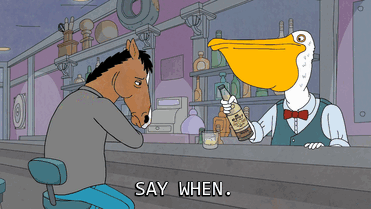I have always had a love for animation. I fondly remember waking up early to binge Saturday morning cartoons and rushing home after school to catch up on the latest animated adventures of Batman and Superman.

It was something I could bond with my parents over and something I could talk about with my peers – and I’ve never grown out of it.
However, my taste for animation shifted as I grew older and craved for “edgy” programs such as MTV’s Daria, Fox’s Family Guy and most recently Adult Swim’s Rick and Morty alongside Netflix’s Bojack Horseman.

While I always admired the programs on networks such as Disney Channel, Nickelodeon and Cartoon Network, my animated palate started to change, and I found the programs on the three networks to be a bit juvenile with underdeveloped characters and trivial situations. As I grew older, I became more socially conscious and gravitated towards programs that were more in-your-face about these social issues, such as the above mentioned adult-centric animated programs. However, it wasn’t until I started to actively follow and pay attention to the Instagram accounts of both Cartoon Network and Nickelodeon that I discovered children’s programming was beginning to tackle these issues as well, albeit in subtle and easily digestible ways.
Programs such as Nickelodeon’s The Loud House and Cartoon Network’s Steven Universe actively featured same-sex couples in ways that I had never previously seen in animated programs and they’re actively embracing these topics by highlighting them on social media – something unheard of when I started watching cartoons.
Along with the LGBTQ+ storytelling mentioned above, Disney Channel is embracing modern non-traditional families as well with Big City Greens. The new program features a small-town working class family who has been transplanted to the big city. The show revolves around 10-year-old Cricket Green, his older sister Tilly, their single father Bill and the eccentric matriarch of the family, Gramma Alice.


It’s not until the 36th episode of the series that their mother and Bill’s ex-wife Nancy Green is introduced. It’s revealed that Nancy has been in jail this whole time and has recently been released and is ready to start new and be the best mother she can be to her two children, leaving her biker gang and lawbreaking ways behind her. The simple act of having the mother being an ex-con and working to rebuild her relationship with her family is revolutionary in of itself.
It’s refreshing to see a father figure in an animated program being portrayed as the (mostly) responsible and altruistic one for a change whereas we almost always see the father being the irresponsible one or the idiotic one (such as The Simpsons’ Homer Simpson or The Amazing World of Gumball’s Richard Watterson).
I soon discovered my former favorite networks were not only embracing the evolving social landscape, they were openly celebrating it as well through their programming and social media presence. It fascinated me, and I wanted to learn more about these programs and how they told their stories to children so much so that I dedicated my graduate thesis to this topic.
After being a casual consumer for years, I’m now (once again) invested in these three networks and am exploring how they deliver various messages to children in ways that people of all ages can understand.


Cartoon five saisons five saisons five saisons five saisons five saisons five saisons five saisons five saisons
LikeLike